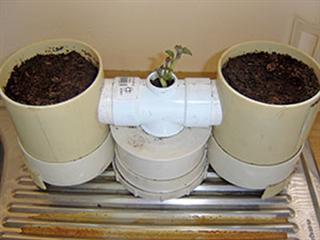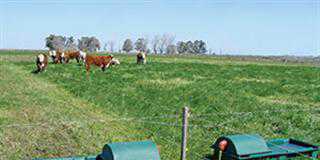
Incorporating cabbage and mustard residue is an effective, natural method of reducing common potato scab. This is the advice of Dr Reinette Gouws, who received a doctoral degree in plant pathology at Stellenbosch University in March. Gouws focused on the occurrence and spread of common scab-causing Streptomyces organisms. She investigated managing scab through biofumigation by incorporating brassica plant residues into the soil before planting.
Partly funded by Potatoes SA, Gouws carried out her research in six South African potato producing areas. Streptomyces is not harmful to consumers but causes unsightly surface scars, leading to market resistance and economic loss for farmers and retailers. “The current products and management programmes used by commercial farmers, the developing agricultural sector and the processing industry to manage common scab are simply inadequate,” she says.
Brassica plants were first used to control common scab in Australia. Gouws explains that this natural method could be successfully incorporated into an integrated and sustainable management programme in South Africa. “A Free State farmer in the 1990s was the first to tell me about how he worked cabbage residue into his potato fields to control common scab,” she recalls.
Farmers from the Gamtoos Valley, the western Free State and Limpopo already use cabbage for this purpose, while Sandveld potato farmers use mustard plants.
How does the biofumigation method work?
Glucosinolates (GLN) found in the leaves, stems and roots of brassica crops are released when plant parts are chopped up and worked into the ground. The GLN fumes are released into the soil and suppress common scab soil pathogens.
Gouws says that this method should not be seen as a magic wand eradicating all soil pathogens, but it will enable the suppression of disease occurrence enough to ensure a higher quality potato harvest.
Her laboratory studies indicated that mustard plants are the best biofumigants to use against common scab. Canola residue also works well, but can act as a host. Using cabbage has the advantage that dry or fresh residue can be worked into the soil after the cabbage crop has been harvested. “The soil can be ‘shocked’ by incorporating mustard plant material, and further control can be instituted by adding cabbage residue every year,” says Gouws.
She believes that this technique is valuable for emerging farmers who cannot afford the chemicals needed to combat common scab. “Current control methods on the market are in any case precarious,” she explains.
Discovery of scab-producing bacteria
During her doctoral study, Gouws identified and characterised seven bacterial species that cause common scab
in South Africa. Three of these species had never been described, while three others were reported in South Africa for the first time. “Thanks to improved molecular biology techniques it is now easier to identify new species complexes worldwide,” she explains.
One of the newly discovered bacteria species has been identified in a few South African production areas. It causes fissure scab, which leads to serious surface damage in tubers. “The occurrence and possible spread of fissure scab is worrying since it can be found in South Africa on Mondial, a cultivar known to be tolerant to common scab,” says Gouws.
For more information, contact Dr Reinette Gouws, phytobacteriologist at the Agriculture Research Council’s Crop Protection Unit at email [email protected]













